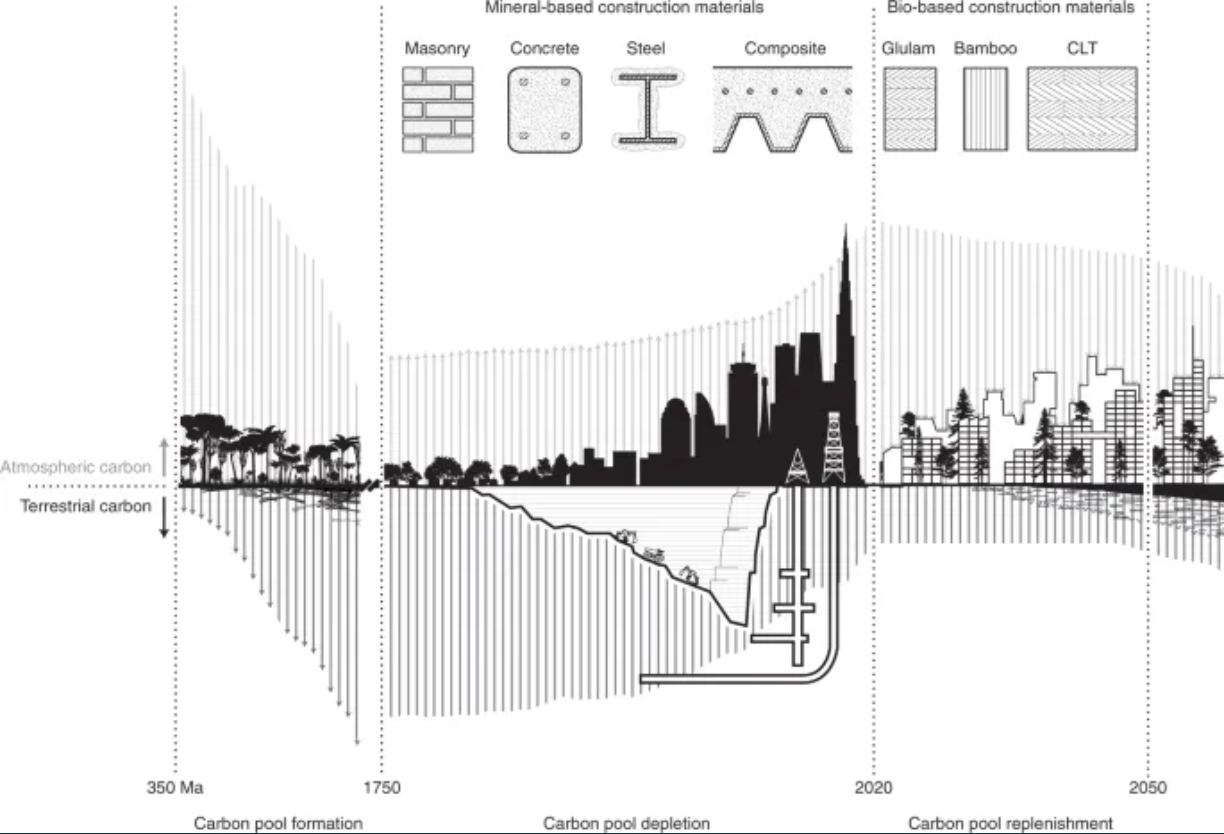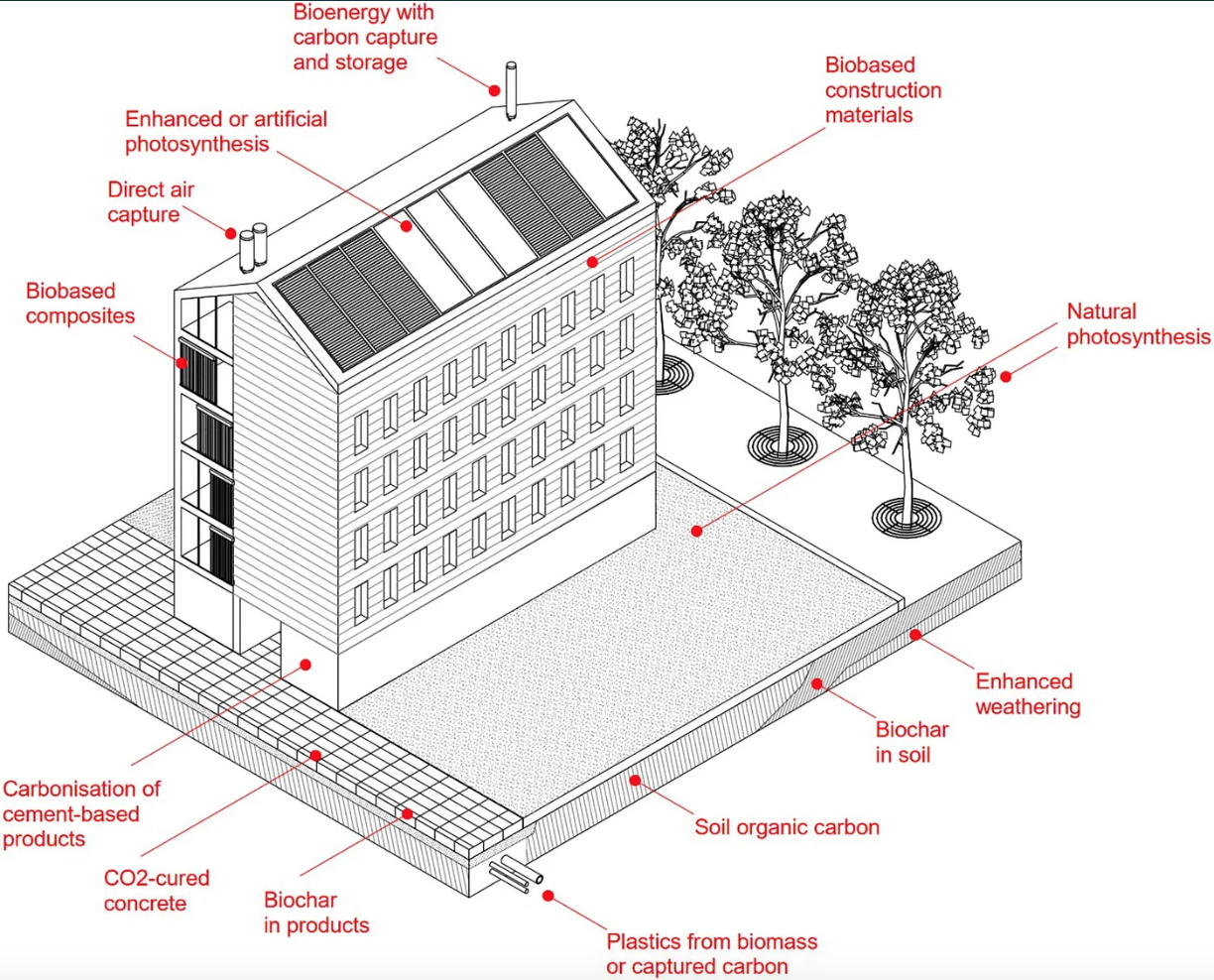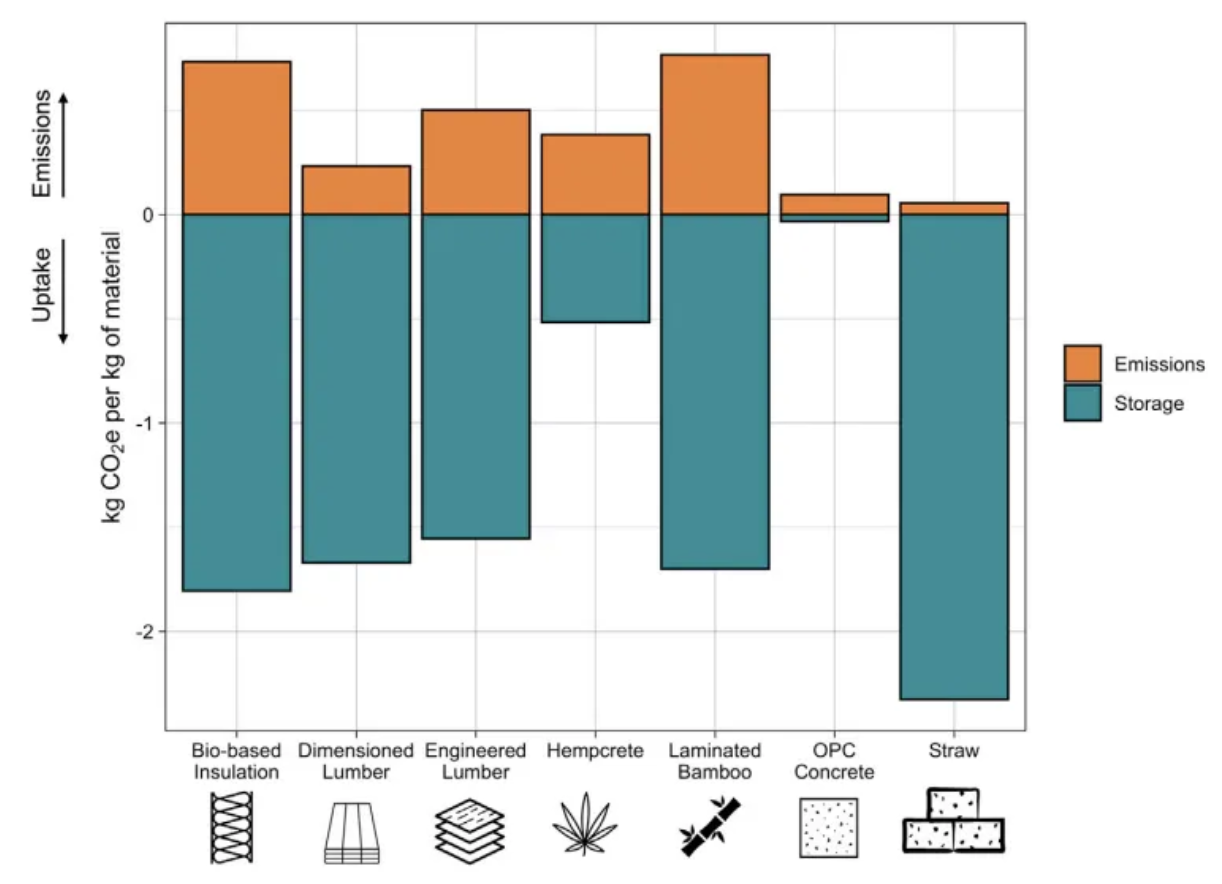Can buildings solve climate change?
The construction sector is a big contributor to climate change.
Could this potential threat to the global climate system be transformed into a powerful solution to the climate crisis?

A material revolution where traditional building products are replaced by bio-based materials such as wood can have double benefits for climate change mitigation.
- Firstly, it can avoid the generation of CO2 emissions from traditional building product manufacturing.
- Second, it can turn buildings into a carbon sink which stores CO2 taken up from the air by trees that are harvested and transformed to engineered timber.
 The required amount of timber globally is in theory available. However, up-scaling of timber harvest would clearly need careful, sustainable forest management and governance.
The required amount of timber globally is in theory available. However, up-scaling of timber harvest would clearly need careful, sustainable forest management and governance.
The history and future of carbon emissions
Around 1760 the world started using up the carbon stored underground to generate energy. In construction, this meant big advancements in mineral-based construction materials like concrete and steel. However, it also meant that a lot of the carbon stored in the earth was now being let out into the atmosphere. As you may know by now, this is the underlying reason for climate change.
There is a future scenario where we fix the carbon balance. If the industry starts using bio-based materials to build our cities, we can store atmospheric emissions in our buildings. This would replenish the carbon pool and in turn not just reduce the climate change effects, but actually work to directly reverse them.

How can the built environment store carbon?
There are different ways a building can store carbon; some exist today and can be scaled, while others are more theoretical. The figure below shows 13 approaches to store carbon in the built environment.

Approaches for storing carbon in the built environment. (source)
Carbon storage in building products
Carbon storage in construction products is one of the carbon-uptake approaches we can use today, and can be classified into 2 categories depending on the mechanism of carbon-uptake.
- Bio-based materials (e.g. timber and bamboo) convert CO2 into biomass through photosynthesis during the growth of the plant before being processed and used.
- Cementitious materials (e.g. concrete and mortar) take up carbon through the carbonation of hydration products. This process is slow and depends on factors like the amount of exposed surface area among others. The amount of carbon absorbed is a fraction of the emissions required to manufacture concrete; therefore, these materials are net emitters.
 The perfect technology of plants
Plants provide a near perfect technology. They take CO2 out of our atmosphere and transform it into oxygen for us to breathe, while storing the carbon in their trunks. That carbon we can then use to build.
As far as carbon storage technologies go, this is by far the most efficient one we know of. If we smartly manage wood harvesting and engineer the wood into modern building materials we can stabilize our climate and build ourselves healthy cities.
The perfect technology of plants
Plants provide a near perfect technology. They take CO2 out of our atmosphere and transform it into oxygen for us to breathe, while storing the carbon in their trunks. That carbon we can then use to build.
As far as carbon storage technologies go, this is by far the most efficient one we know of. If we smartly manage wood harvesting and engineer the wood into modern building materials we can stabilize our climate and build ourselves healthy cities.
Why timelines matter
Life-cycle assessment literature suggests that carbon needs to be stored for 100 years in a product in order for it to “count” as sequestered.
This means that use of a building before deconstruction (or demolition) and the end-of-life treatment of its components can be the deciding factor between a zero-emission building and a carbon-sink building.

The carbon-storage potential (negative values) compared with the cradle-to-gate emissions (positive values) associated with manufacturing the material. Units are CO2e per kilogram of material. Source: “Buildings as a Global Carbon Sink? A Reality Check on Feasibility Limits.” One Earth 3(2), Cell Press, Aug. 21, 2020.
How to build for impact
Sustainable buildings look better, make their tenants happier, and can both mitigate as well as act to reverse climate change.
It can be confusing and scary to design and specify projects with new materials you haven’t used before. We believe that understanding the performance, impacts and implications of non-conventional building products is key to unlocking a carbon-negative construction sector.
Through our platform, we aim to democratize this understanding and help architects and contractors build a brighter future. Reach out to us to find out more or register on our website for early access.

Our mantra at 2050 Materials is “Nothing is complicated, just poorly explained”. Through our work, we want to transform the processes of sustainable construction to something that is so easy to do, that it doesn’t make sense to not do it.
– Phanos, Co-founder & optimist
Related articles

Climate-Resilient Materials for the Built Environment: A Data-Centred Prime
As climate volatility intensifies, resilience metrics are fast becoming as critical as carbon data in material selection. This article outlines why adaptation is now a design imperative, how materials can be evaluated through a systems lens, and what KPIs project teams should demand. From self-healing concrete to fire-rated façades, we present a structured taxonomy of resilient materials, explain how to embed this intelligence into digital design workflows, and propose next steps for specification, benchmarking, and procurement.
Read more
The Most Interesting Low Carbon Products in Office Design
In this article and collection, we highlight 11 outstanding products that contribute to a lower carbon footprint in office design.
Read more
Top Low Carbon Building Boards: Performance, Benefits, and Use Cases
The building boards highlighted in this article and collection showcase low-carbon innovation in modern construction.
Read more